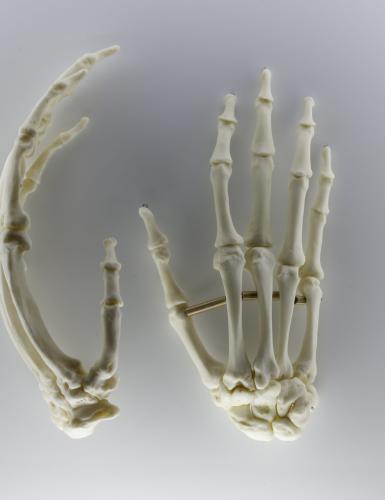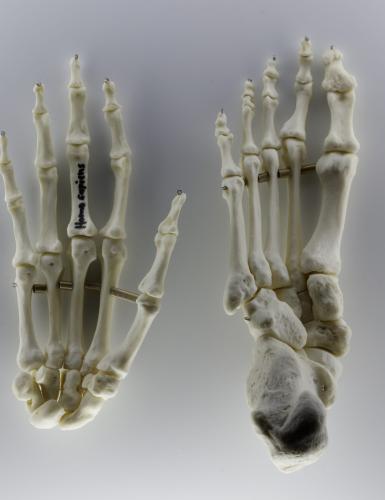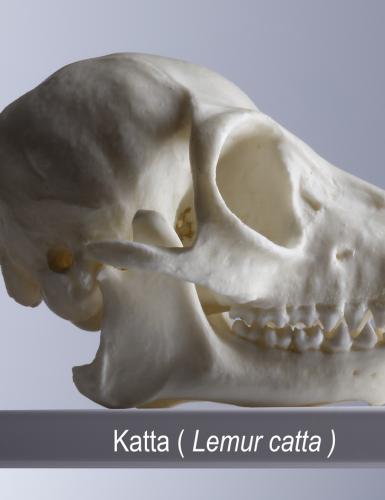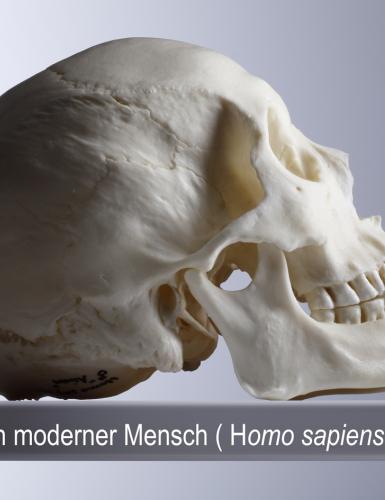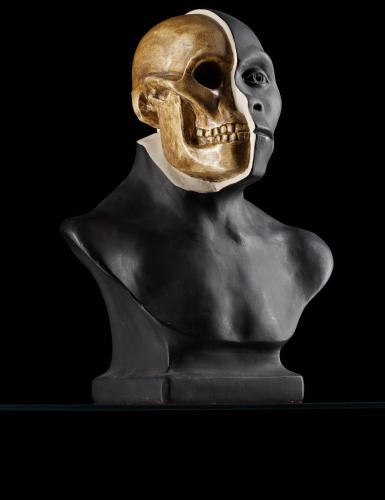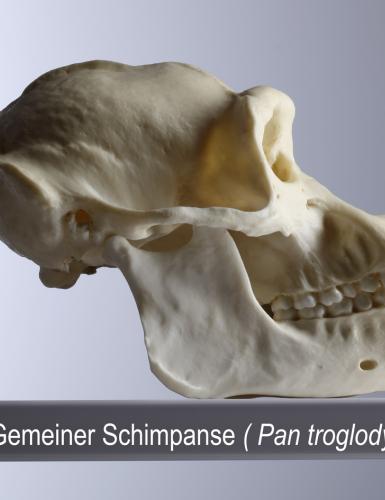The Osteological Teaching Collection of the Mainz Anthropology Department of the Institute of Organismic and Molecular Evolutionary Biology features selected replicas of both living and extinct primate species, including humans (Homo sapiens). The collection currently represents around 40 primate species and related groups, with a special focus on skull replicas. It also includes a number of complete skeletons.
Most of the objects in the teaching collection represent living species, and together they cover all the major primate families, spanning roughly 74 million years of primate evolution. Another focus is on extinct species that are closely related to humans in evolutionary terms. The Teaching Collection provides an opportunity to explore evolutionary trends in human development (hominization) through comparative studies.
Each year, around 70 students use the Teaching Collection to learn how to reconstruct evolutionary relationships. These courses are offered as part of the B.Ed. Biology and M.Sc. programs. Biology and M.Sc. Anthropology. Students work in small groups, collecting data using a catalog of characteristics specifically developed for this purpose. The computer-aided evaluation makes use of established programs. The discussion of the results promotes students' understanding of what makes up our species. For deeper learning, students can access a dedicated website for the Osteological Teaching Collection, where all relevant information is available in text and images. Individual objects are also stored there as 3D animations.

